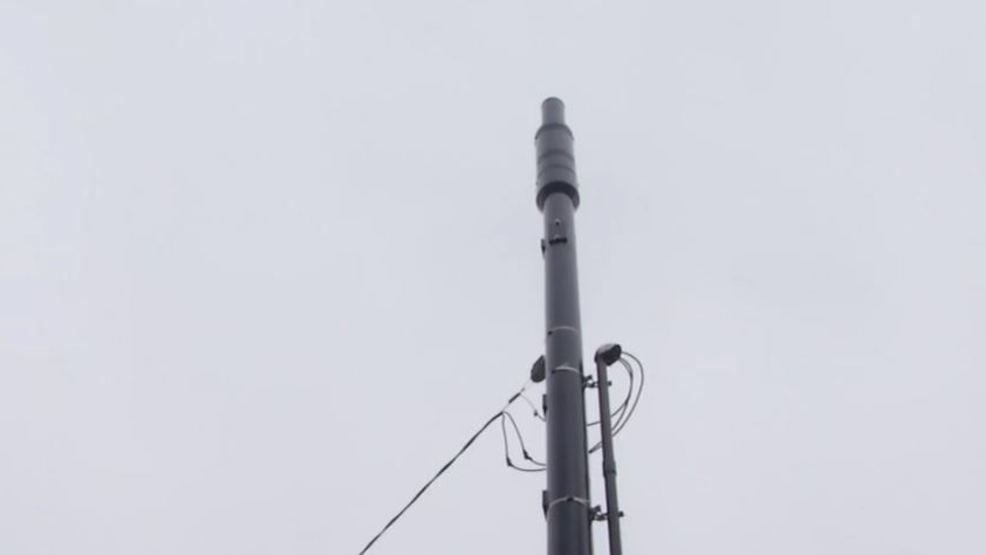If you've ever wandered through a town and spotted tiny 5G cell towers on the poles of street lights. They look like small boxes however they're actually sending wireless signals from mobile providers to your mobile.

They are replacing the larger, purpose-built cell towers. While they're less noticeable however, they could create issues for users.
A of the FCC's Radiation Exposure Thresholds
The FCC's Radiation Exposure Thresholds determine the safe distance that a person can be exposed to electromagnetic energy generated by wireless devices. The limits for exposure are based on scientific data that show that RF energy could cause harm to health.
The rate of absorption called the specific absorption rate (SAR) is an indicator of the amount of radiofrequency energy absorbed by tissue. It is typically 1.6 watts per kilogram, spread over a Gram of tissue.
However, because 5g transmits at higher frequencies this could be able to create more energy on the skin and other exposed body areas. This can result in a wide range of possible harms, such as an increase in the development of skin conditions like dermatitis, skin cancer and cataracts.
Due to the potential for negative effects of 5G radiation, PSU has chosen to establish a general, localized power density limit of 4 mW/cm2 based on the average on 1cm2, and never exceeding 30 minutes for all 5G services at 3000 GHz. This limit for localization is in line with the maximum SAR that is spatially averaged at 1.6 W/kg, averaged over one grams of tissues at six GHz.
The FCC's Maximum Exposure Thresholds
If you've ever used a cell phone, you probably know that the safest location from the tower is at least 400 meters. This is because the power of transmission from the cell tower is significantly increased the further away your location from the tower.
While it sounds like an ideal idea however, people living in close proximity to towers may actually be more susceptible to health issues. For example, a study from 2014 in India discovered that people living within 50 meters of cell towers had significantly more health complaints than those who lived farther distance from them.
But, the study showed that residents who moved to areas that were further from cell towers noticed their symptoms improve within a few days. Other studies have demonstrated that exposure to extreme frequencies of radiofrequency electromagnetic fields (EMFs) can cause brain tumors, cancers and other health issues.
https://ctxt.io/2/AACQndpeEA is because RF radiation, which is used in wireless communication, can be absorbed by the body's outer layer, called the skin. This is vital to be aware of because the skin acts as a shield against mechanical injury, infection from pathogenic microorganisms, as well as infiltration of toxic substances. It is also the largest organ in the human body, and is accountable for keeping the integrity of other organs.
The FCC's Minimum Exposure Thresholds for the Minimum Exposure
The FCC's Minimum Exposure Thresholds rely on many assumptions that aren't supported by scientific evidence. These include the erroneous belief that exposures to RF radiation are safe due to minimal absorption into body (i.e. the heating of tissues).
https://pastebin.pl/view/10554a14 ignores the greater penetration of ELF components of modulated RF signals as well as the effects on the body of short bursts generated by RF waves that are pulsed. These assumptions are not in line with current understanding of the biological consequences of RF radiation. Therefore, they should not be relied upon for health-protection exposure standards.
Additionally, the ICNIRP and FCC limit the maximum limits of exposure to peak local SARs based on the maximum spatial specific absorption rate (psSAR) that is not a reliable dosimetric instrument to determine the degree of exposure to RF radiation. In particular it is inconclusive when frequencies exceed 6 GHz. Furthermore, psSAR has not been tested for RF radiation that is exposed to other environmental agents , such like sunlight. Discover more here of RF radiation and other agents in the environment could cause synergistic or antagonistic impacts. This could result in an increased risk of negative health effects. For example, co-exposure to RF radiation and sunlight could cause an increase in the incidence of skin cancer, and may also exacerbate other skin conditions like acne.
